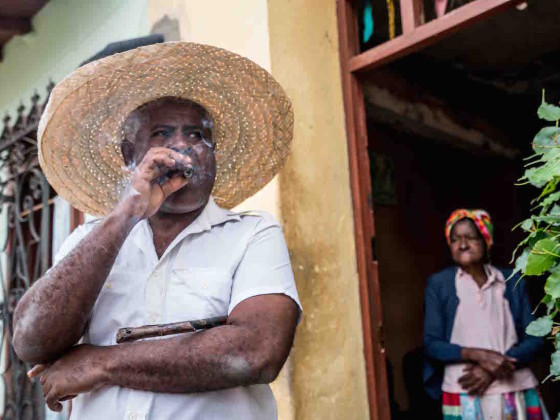ACCORDING TO MY FITBIT (and much to its astonishment) I walked about 15 kilometres a day while I was in Cuba. Some might find that admirable but the truth was that it wasn’t for cardio, or even to see particular sites; it was because I couldn’t get enough of watching scenes unfold around the city — mostly Havana, but also Trinidad — and from those scenes getting the chance to meet locals, discuss Cuba (or Canada, my home) in fractured Spanish, and feel engulfed by the atmosphere of Cuba. Along the many, many roads I walked, I had the honour to photograph dozens or even hundreds of faces. Here’s 16 beautiful faces (and moments) that I won’t ever forget.

My Spanish is terrible but I’m fairly certain this man’s name was Edu (short for Eduardo I think). What I did catch though was that he was born and raised in Havana, and went to fight overseas in Castro’s army, stationed in Angola. This was where he lost his arm. Since then he’s been living in Havana where the government helps, but not much, and he’s left unable to work. Later he introduced me to his daughter, and granddaughter, who both live with him. I sat with him while it rained, again, in the colourful streets of Centro Havana.
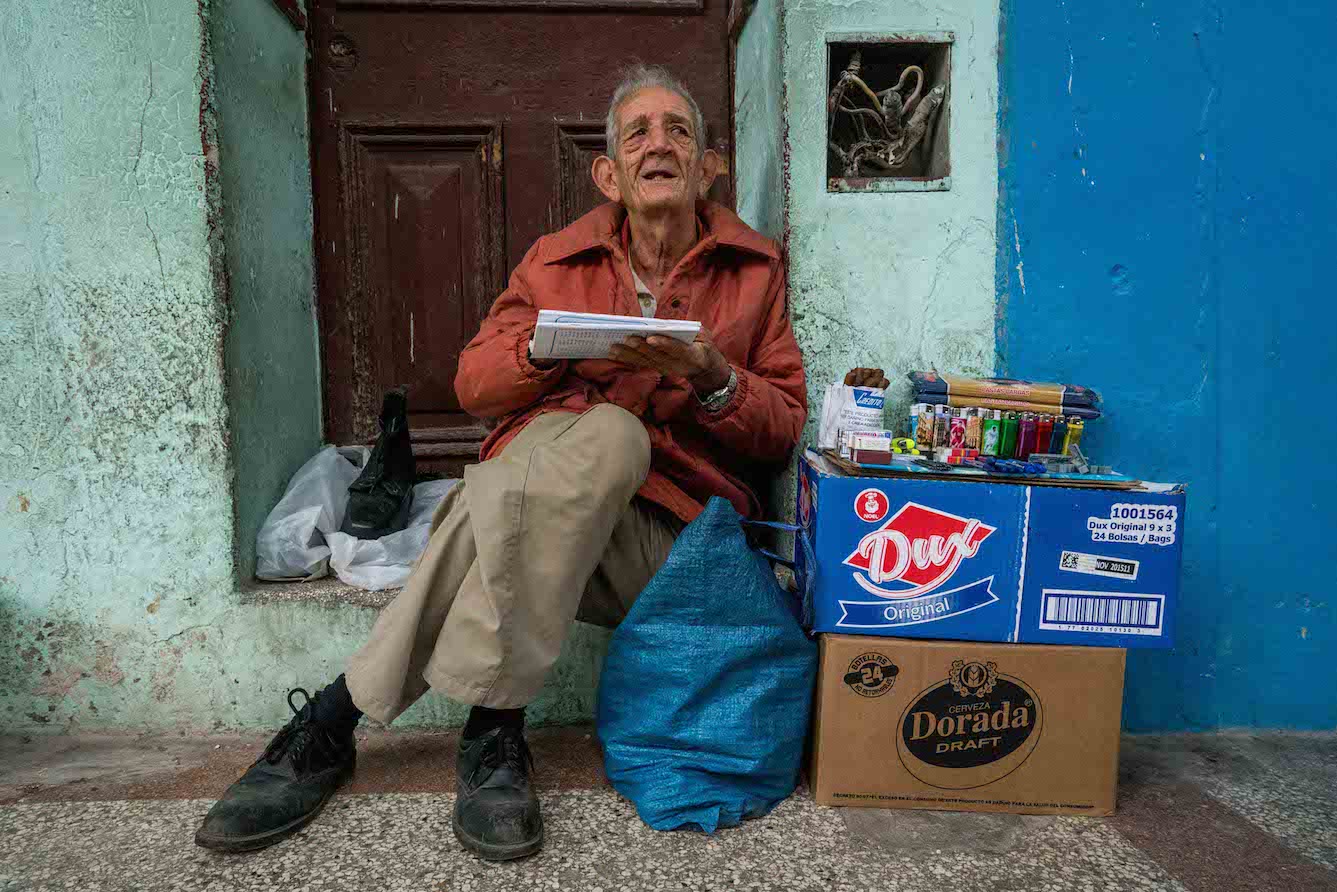
My understanding of the government is that everyone is paid the same regardless of their job, that it’s illegal to not have a job when not in school, and that food rations are handed out each month. However, the income, I was told, is about 25 CUC ($25 USD) a month — which can go far in local pesos but not as far as you’d like to hope. The food rations sounded fairly meager too, though I could have misunderstood. While we saw just a few truly homeless people — since the government gives you housing — we did see a number of folks getting crafty with either extra or supplemental income. This man was selling pens, lighters, paper, matches, pencils, pasta, and his stipend of cigars. We tried to buy a pen for a single CUC — but he made us take 5.
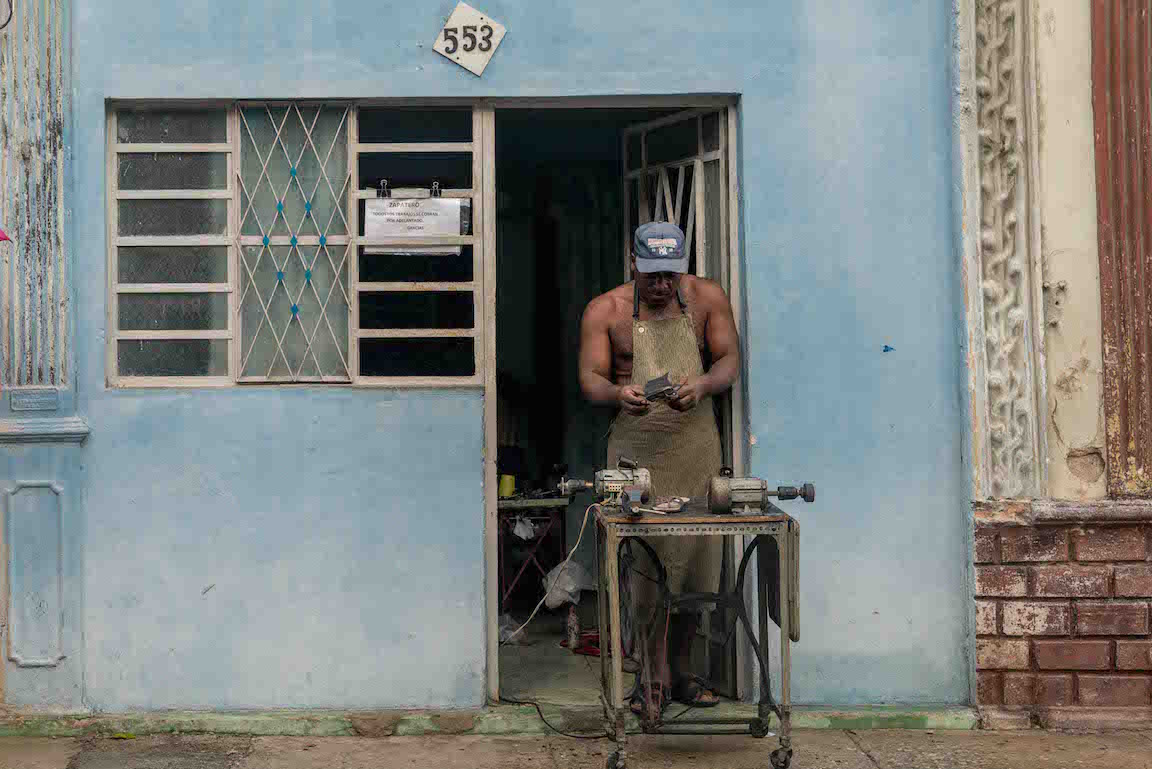
I came across this hulky fellow just after the afternoon rain had let up. Roaming down the streets of Centro Havana he had just hauled his table out to continue his work — a shoemaker, according to his sign (and the shoe on the table). Life in Cuba, it seems, happens in the streets a lot of the time. This is certainly a charming part of walking around Havana — watching neighbours chat, kids playing soccer, people shouting to one another as they hang laundry. With only a few TV channels, many people who can’t afford TVs, and no wifi except in parks, it makes sense to do life outside. That said, Cuba is changing rapidly — it will be interesting to see if this life in the streets is retained when other distractions are more readily available.
Intermission
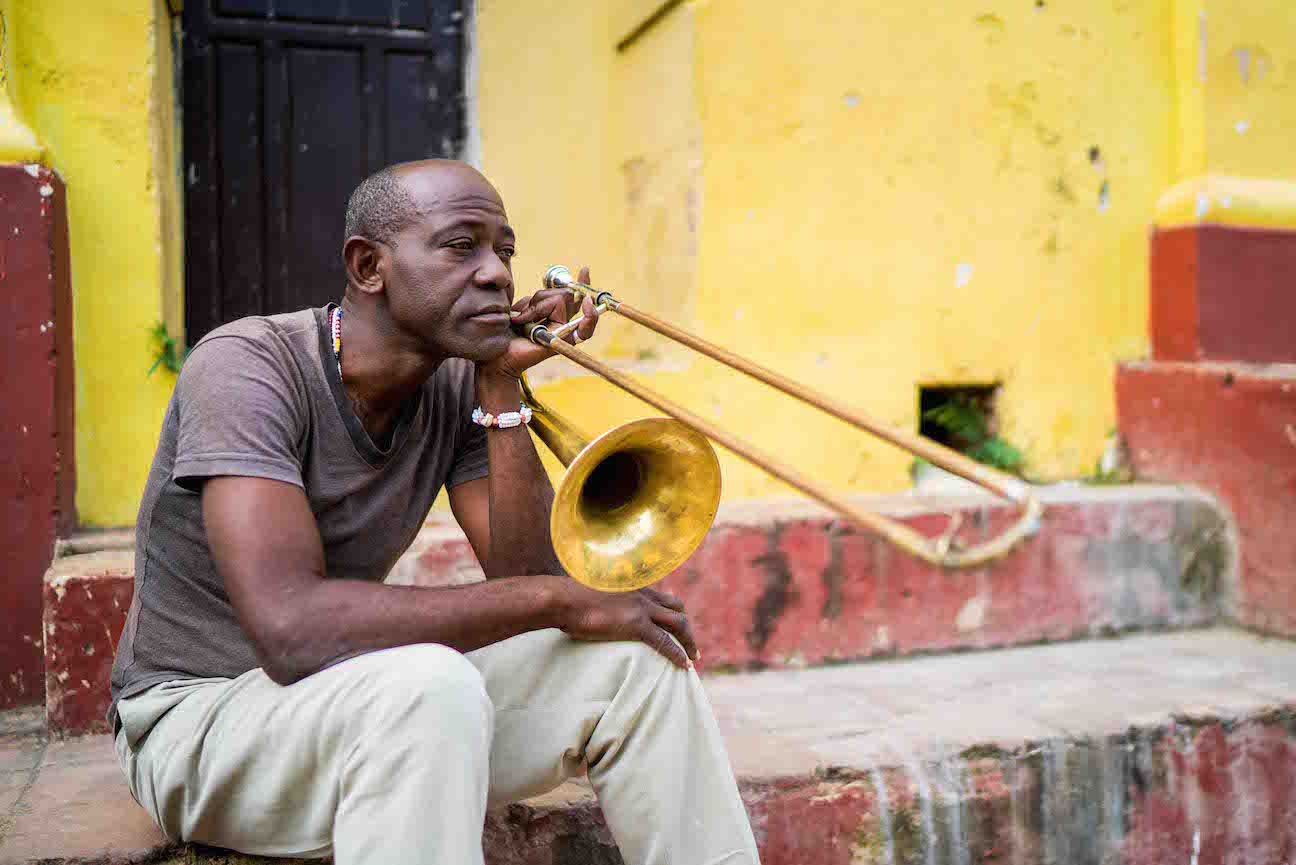
A seemingly forlorn trombone player takes a break on a side street in Trinidad. Just before this shot he was playing a rusty version of The Beatles’ “Yesterday.” I found Trinidad to be a calm relief to the chaos of Havana — and an extremely colorful relief at the same time. And it felt like around a number of corners, characters like this guy were just waiting for me.
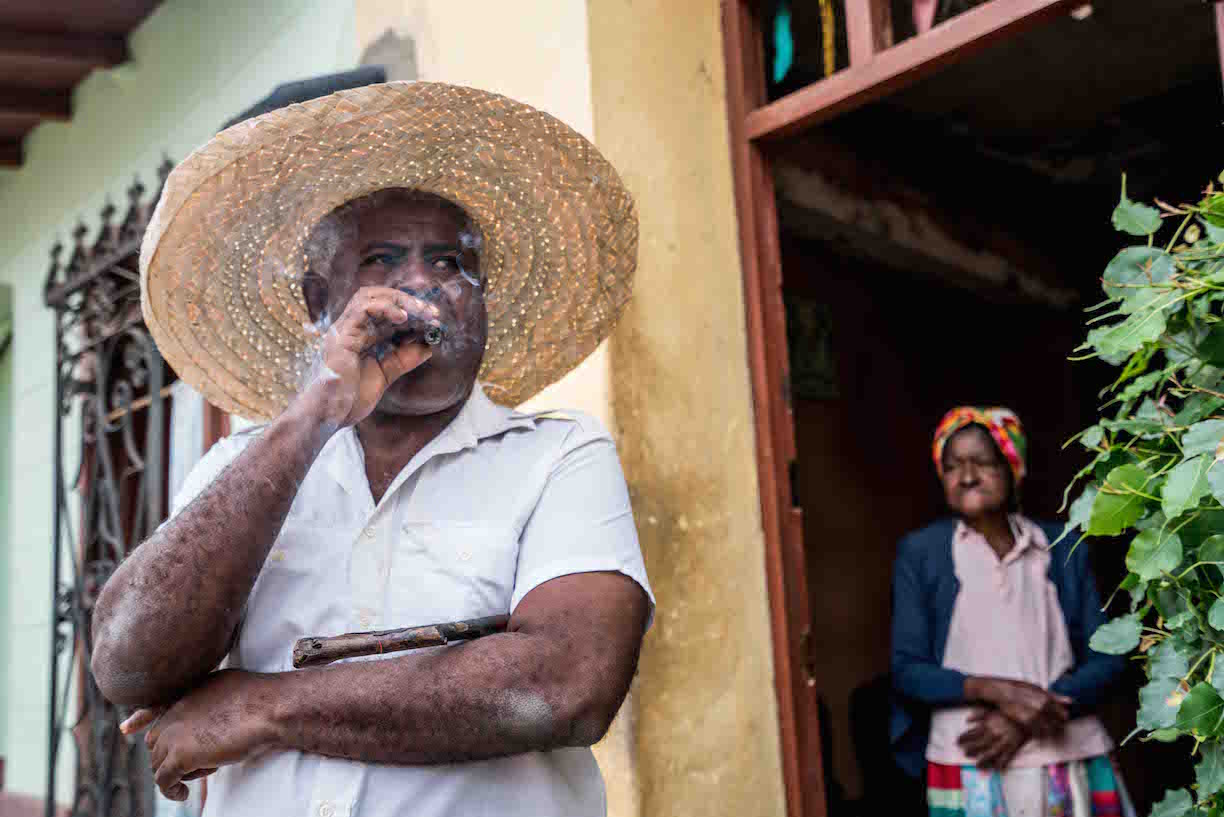
Or, characters like this man — Luis Migel, a Santaria priest who insisted he be my forthcoming child’s godparent (I was six months pregnant on this trip). I look forward to telling my adorable spawn they have a godparent in Trinidad, Cuba who practices Santeria. He blessed my belly with a prayer and a few firm taps of some kind of stick.
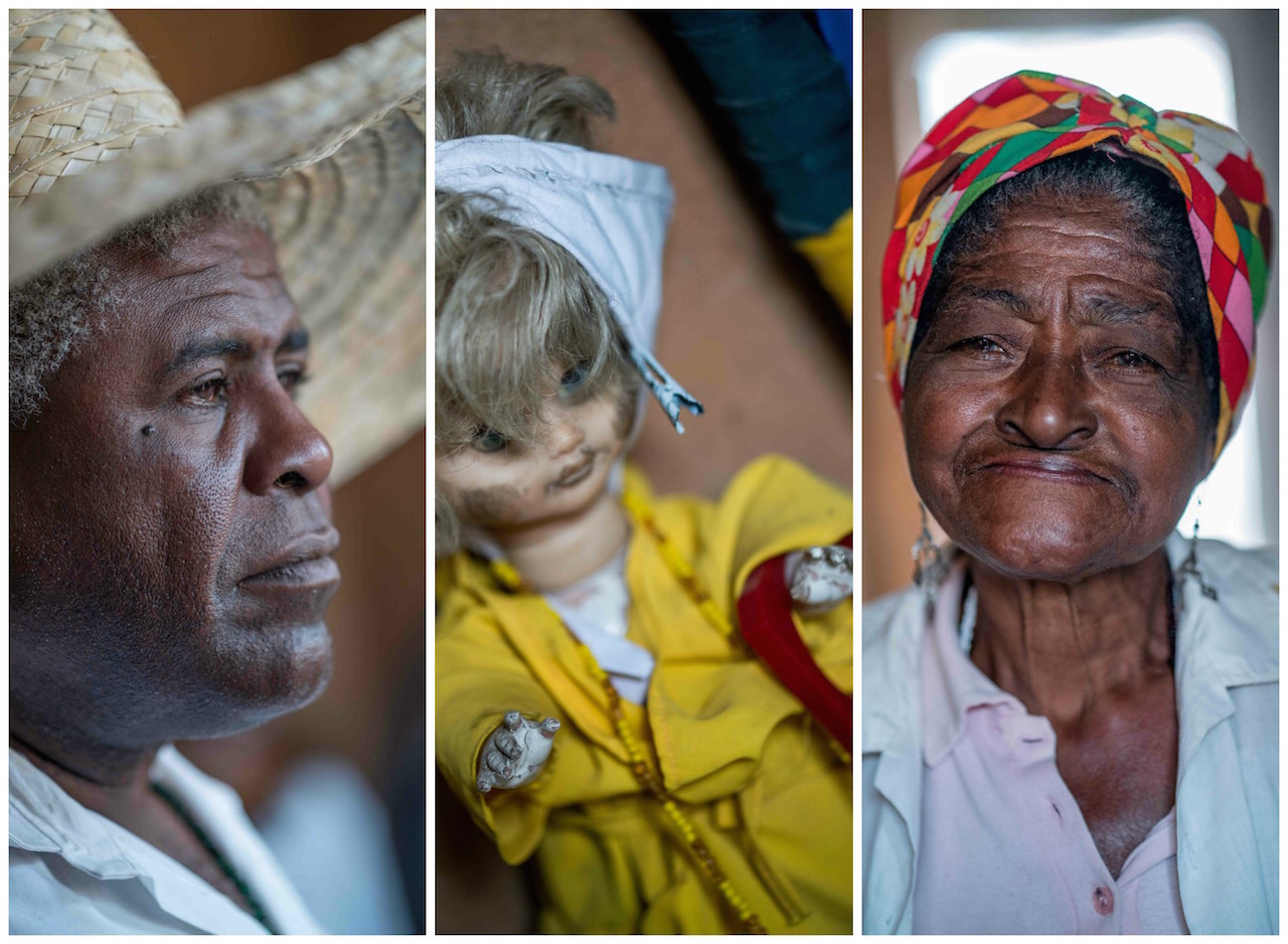
Luis and his wife have a small Santeria area in the front of their home where they offer blessings or spiritual rituals to locals. When someone on our team of photographers learned their brother had passed away, Luis preformed a 5-minute ceremony that involved blowing air, smoke, spinning around, and a few minutes of fervent prayer. The blending of African religions and Catholicism brought Santeria around — though many, including the Santeria priest, would count themselves as Catholic in the long run.
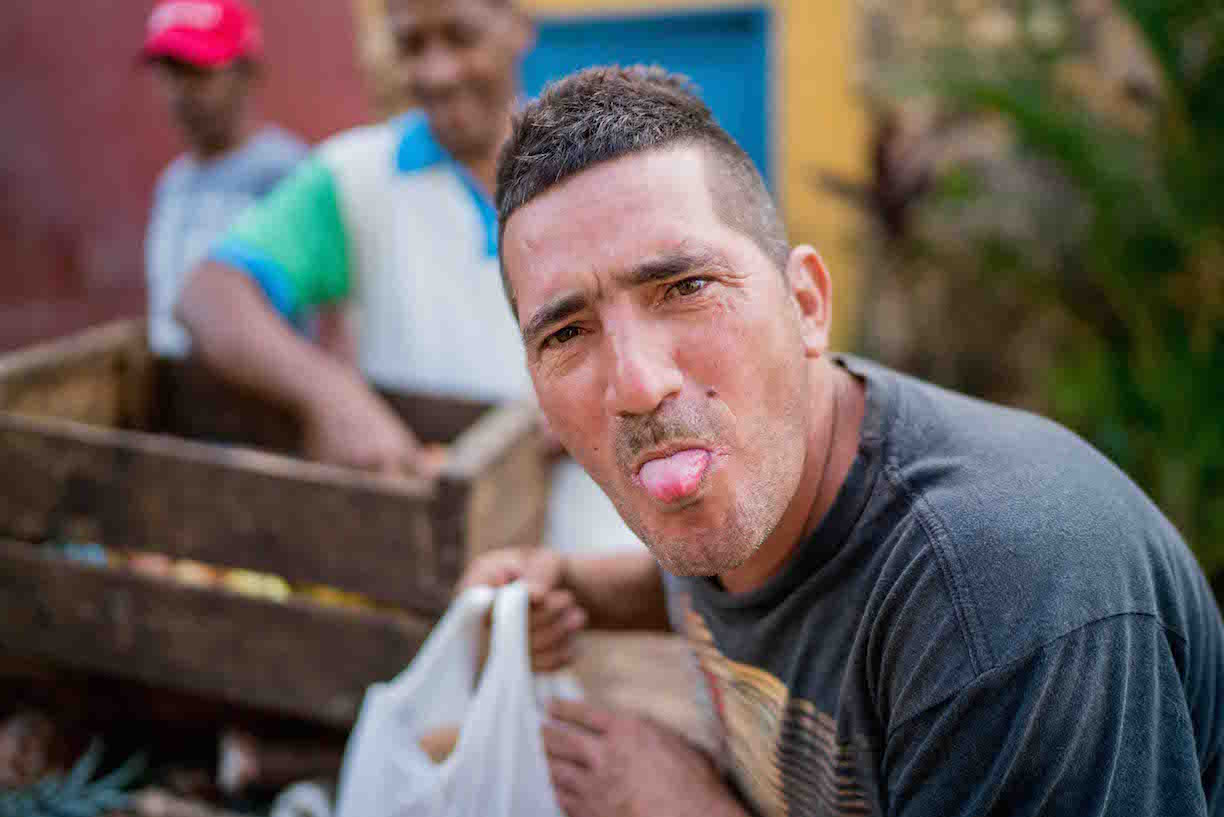
Or, characters like the pineapple and tomato seller, hauling his wears around Trinidad in a wooden cart. Both he, and the buyer, took turns weighing the produce until it was agreed that the scales matched. I was trying to capture their hands with the pineapples — but got this moment instead.
Intermission
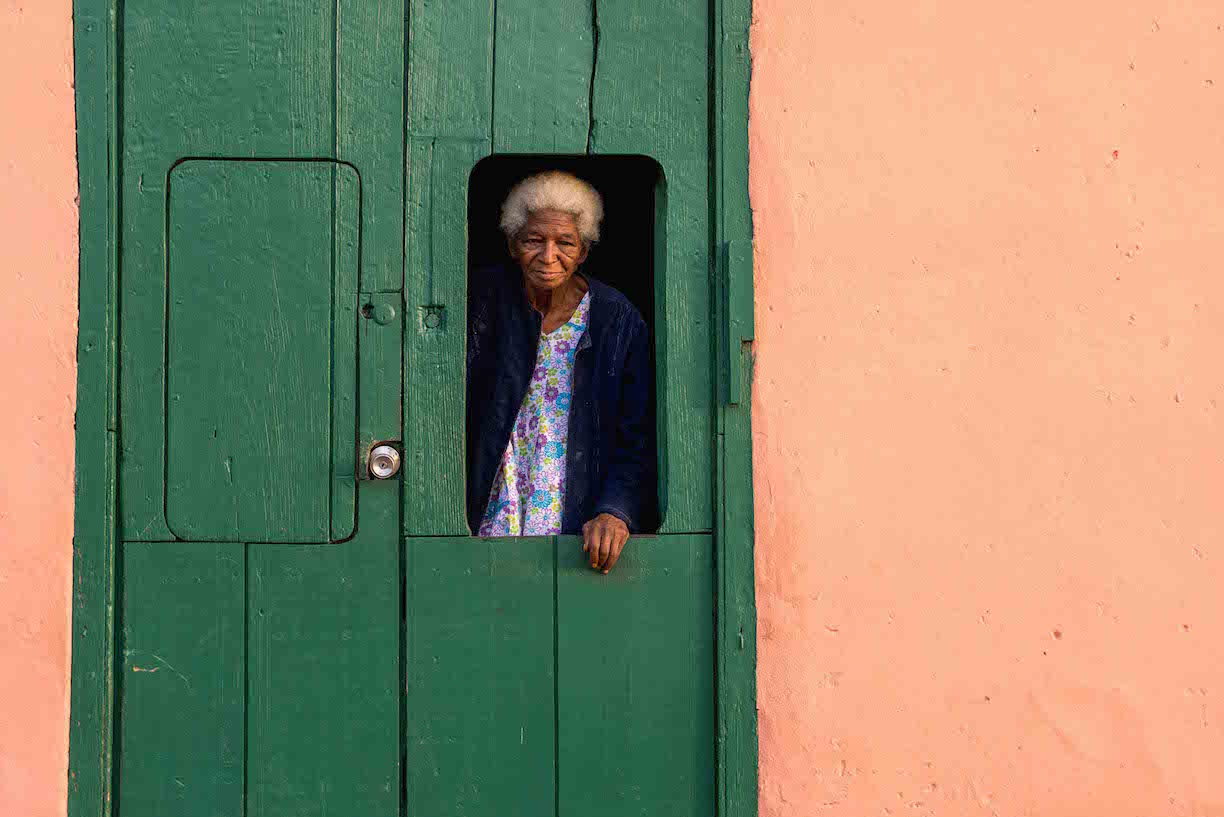
I noticed that people love to hang out in their windows in Cuba. It seems second best to sitting out on the street altogether. I wish I knew my neighbors well enough that hanging out my condo window would allow interactions, or even anything interesting to look at. Where I live — in Canada — my neighbors would totally get the creeps.
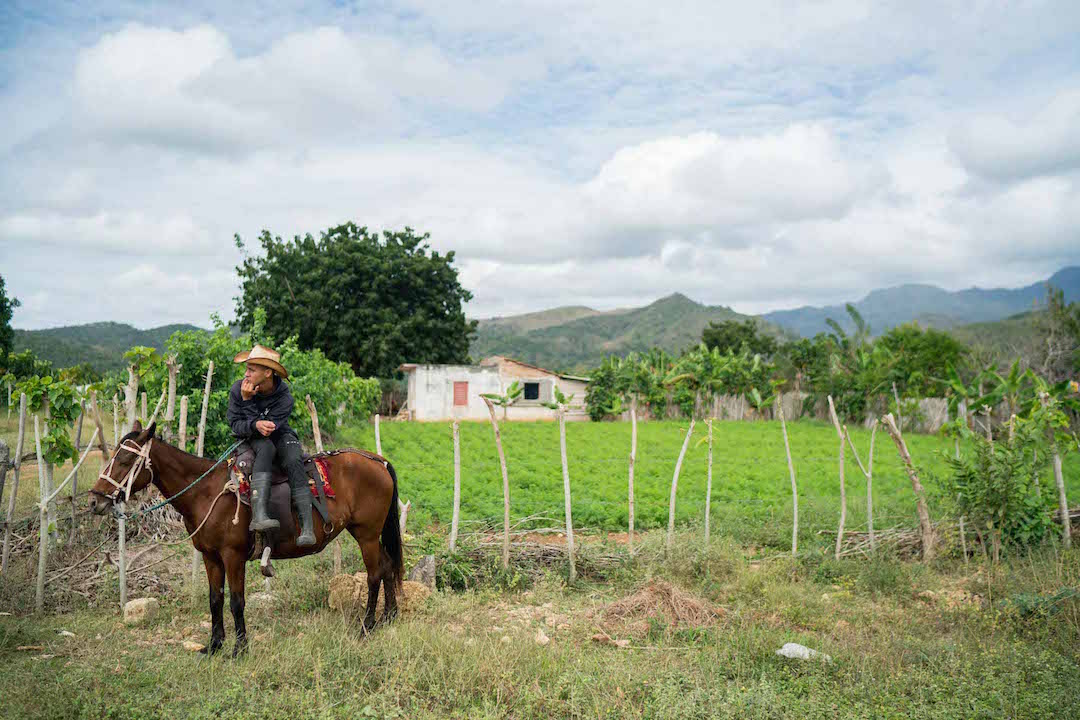
A cowboy waits patiently for a horse race to begin, in the more rural area outside of Trinidad.
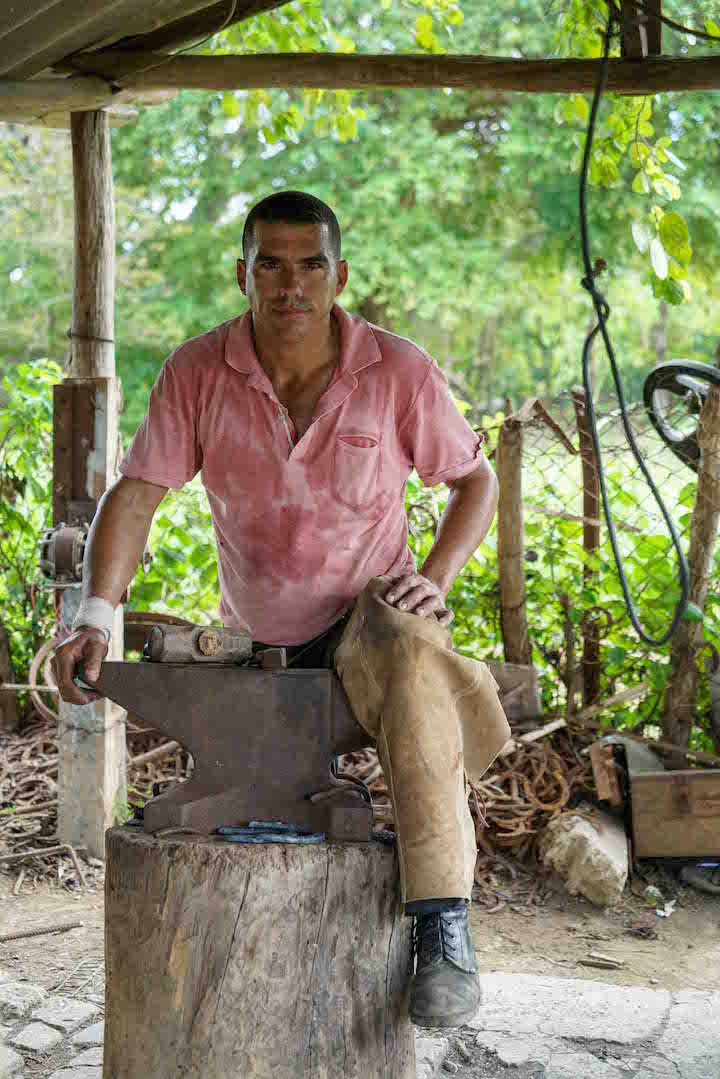
Further down the road, Alessis, a ferrier — a horseshoe maker and fitter — welcomed us into his home to watch him work. He heated the iron, flattened it, shaped it, made holes in it, and then worked it until it perfectly matched the hoof.
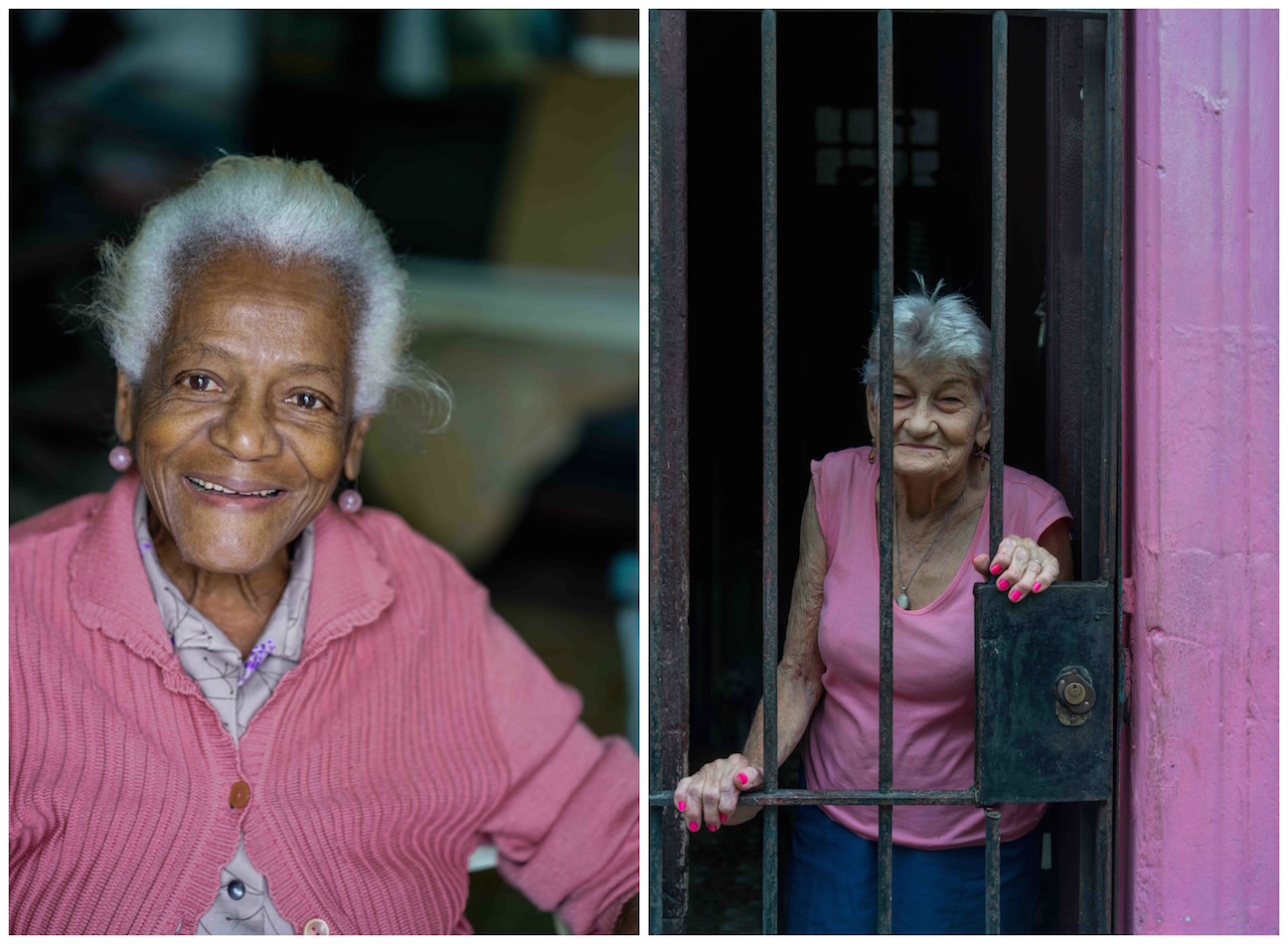
Pink ladies of Havana. Not only are the buildings famously colorful but the people are too — not just in personality but literally in adornments. Not all the time, not every person, of course, but I did capture these two beautiful ladies clad in hot pink on the same day. The woman on the left was working on a project with a number of other older ladies — there were sketches and lists strewn across the table; while the woman on the right simply came down to see what we were up to — with her nails freshly painted to match.
Intermission
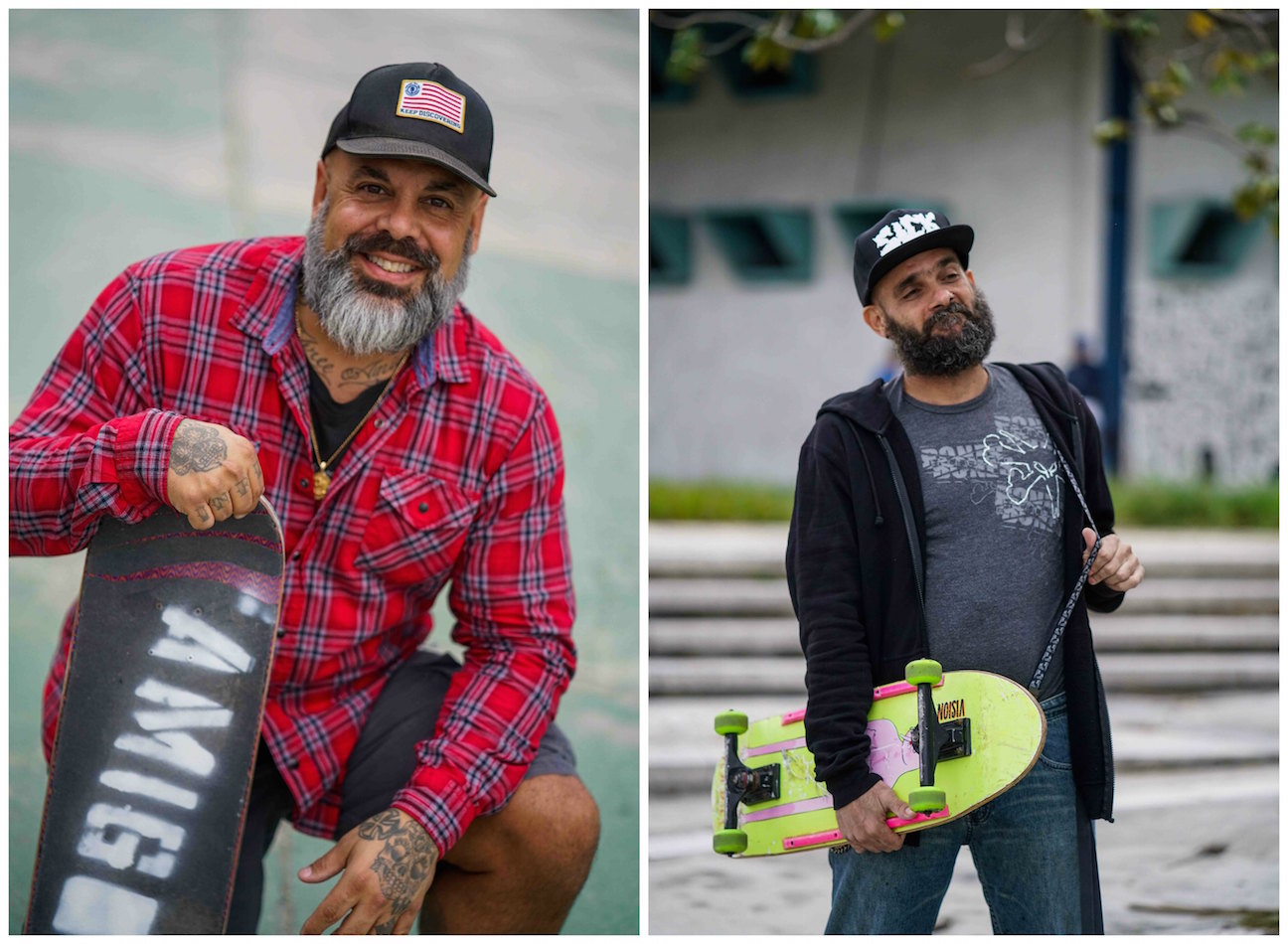
Skaters of Havana. Left is Rene who runs an NGO that works in Havana, called AmigoSkate. He lives in Miami but travels to Havana a number of times a year to empower the local skate community and really empower the youth of Havana however he can. On the right is Havana legend — Che Pando. Known as the godfather of skateboarding in Cuba, and now successful tattoo artist (who has to have his tools, inks, and tattoo goods smuggled in for him) who’s spent 16 years waiting for the government to come tell him tattooing isn’t a government-regulated job, and shut him down. Rene and Che work together often, knowing that the lifeblood of Havana is in its youth, and that the new generation is poised to make big change in the city — if they’re empowered, lifted up, cheered on, and told that they can.
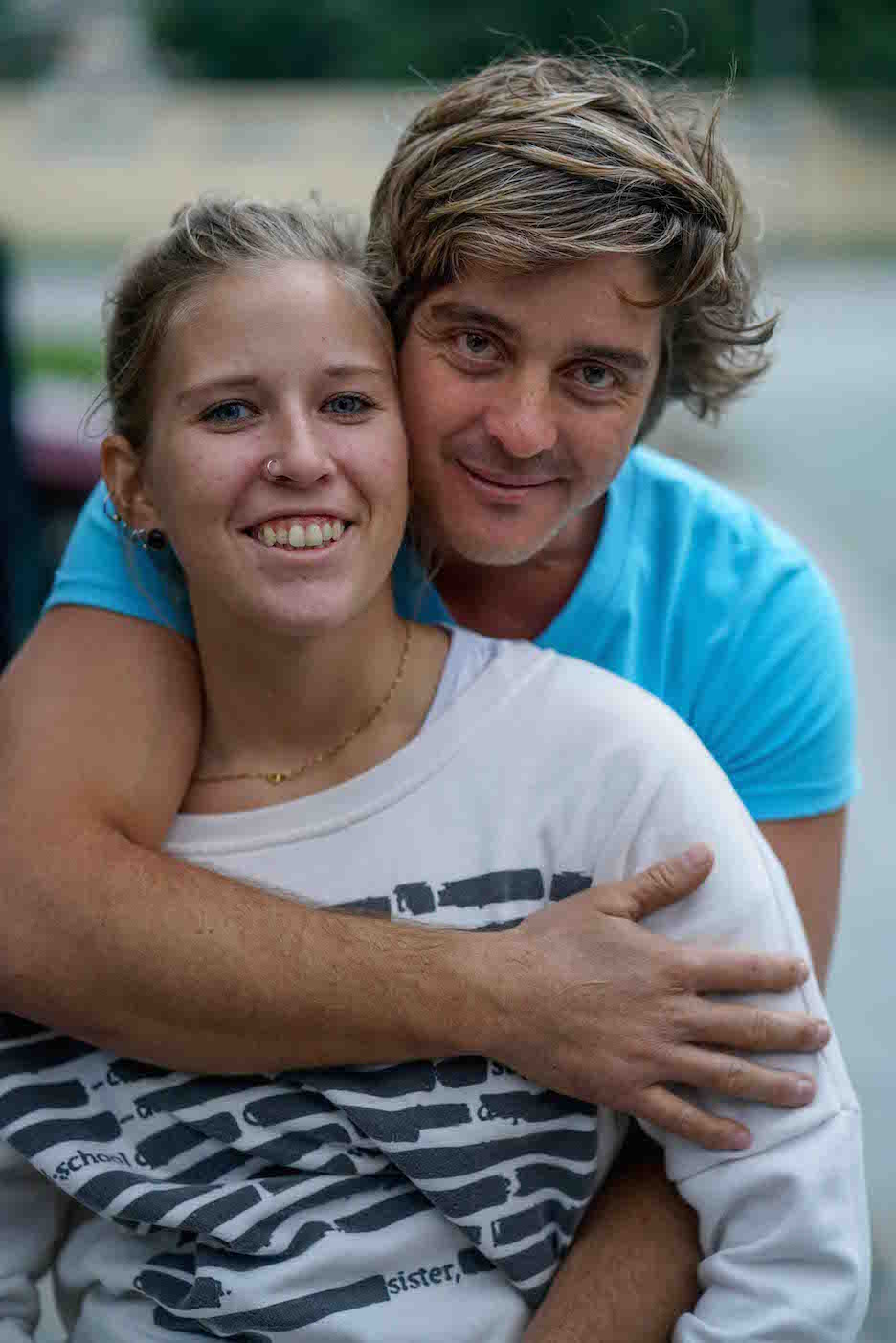
Youths like Luis who find skateboarding to be a creative outlet in an otherwise very structured society. While he looks like he fell out of SoCal, Luis is a born and raised Cuban kid just trying to figure out what’s next — like teenagers anywhere (his girlfriend, Eli, works for the Norwegian Embassay). For him, options are more regulated. Talking about the changes coming to Cuba, they’re most excited for more, and better, wifi.
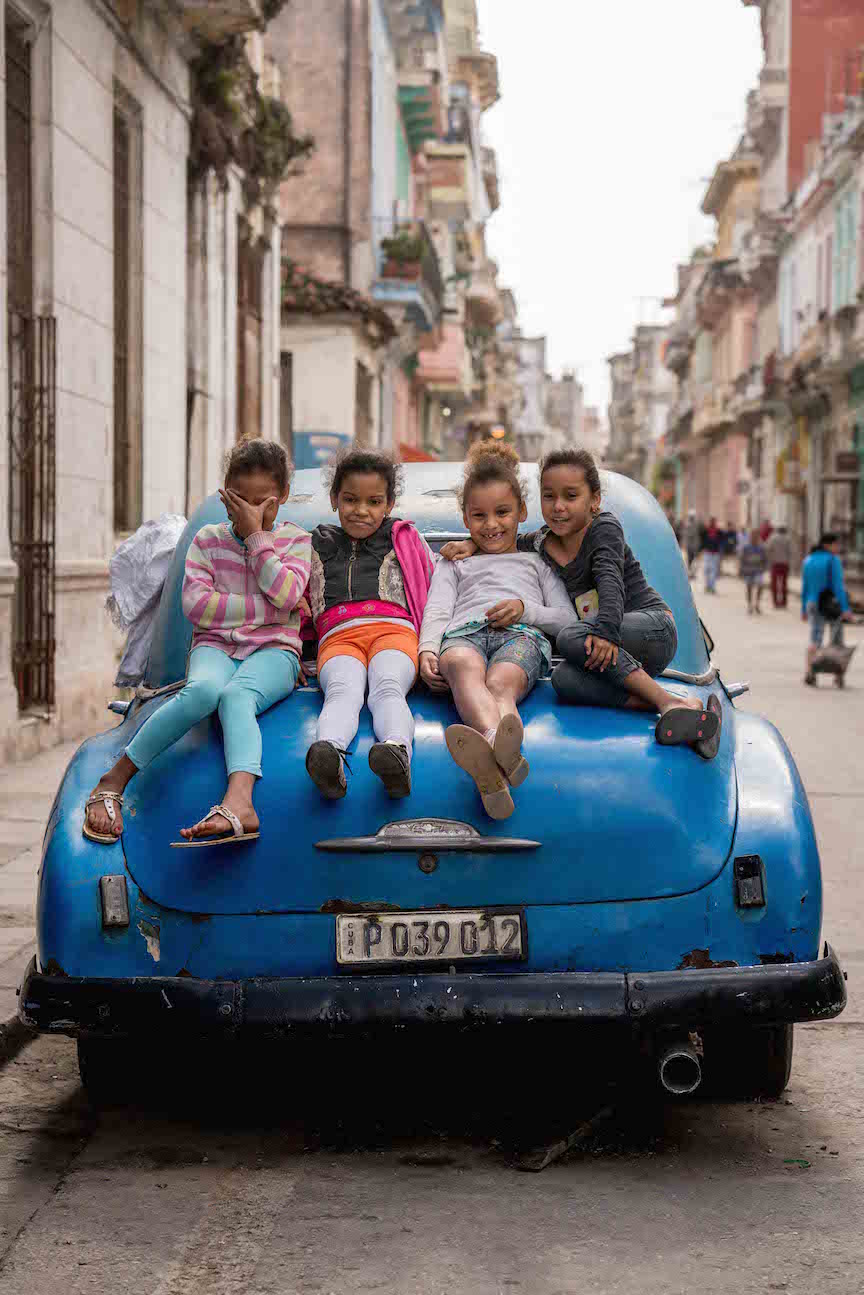
Or youths like these — still carefree and wandering the streets of Centro Havana, playing tag or soccer or generally just teasing one another. They’ll find a constantly changing Cuba as they grow. While I see changes all over the city and country — more independently owned restaurants and bars, more galleries and nightclubs, more access to outside music and movies (through a very impressive system of pirating and hard-drives), wifi in more and more parks, phones hacked to allow unauthorized apps, offering more access to outside news and life, increasingly relaxing rules for visiting Americans and even imports and exports … Cuba is certainly changing. The government is shifting, some aspects of the culture are adapting, but its people will remain its people.
